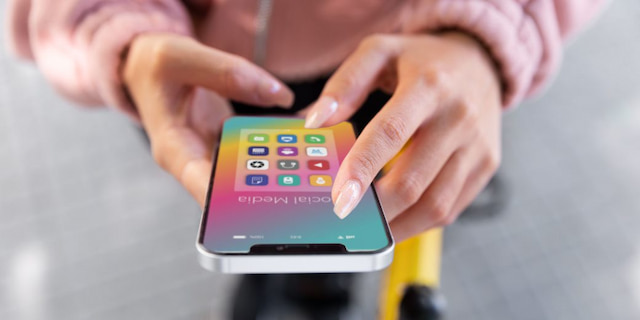According to the Guardian, around 53% of children aged 5–16 owned mobile phones by the age of seven. By the time they are 11 years old, about 90% have a smartphone. Many of these children can easily be exposed to inappropriate content or habits with the help of a smartphone. Luckily, if your child is using an iPhone, there’s hope. Here’s how to use the iPhone’s parental controls to identify red flags concerning your child’s phone usage.
What are the Red Flags Concerning Children’s Phone Usage?
There are a few red flags you can come across when your child uses a smartphone. Here are a few.
Too Much Screentime
If your child is spending over two hours on their phone every day, then you have a problem. Too much screen time can consume all of your child’s focus while watching TikTok videos. Some of the dangers of too much screen time include:
- Obesity: Spending too much time sitting in front of a screen can reduce your physical activity and increase your calorie intake, leading to weight gain and health problems.
- Sleep problems: The blue light emitted from electronic devices can interfere with your natural sleep cycle and make it harder for you to fall asleep and stay asleep. Lack of sleep can affect your mood, memory, concentration, and immune system.
- Chronic neck and back pain: Holding your device in an awkward position or hunching over a screen can cause muscle strain and posture problems. Over time, this can lead to chronic pain and stiffness in your neck and back.
- Depression and anxiety: Too much screen time can affect your mental health by exposing you to negative or stressful content, reducing your social interactions, and disrupting your brain chemistry. Studies have found that excessive screen use can increase the risk of depression and anxiety, especially among young people.
- Lower test scores: For children and students, too much screen time can also affect their academic performance by distracting them from their homework, impairing their learning and memory, and reducing their attention span.

Hiding Their Phone Usage
If your child is using their phone at inappropriate hours, like four in the morning, or hides their phone whenever you walk into the room, then you’re seeing a red flag. Children shouldn’t have anything to hide from you, and if they do, it usually means foul play. Though there can be different reasons why your kid is hiding their phone from you. Some reasons include:
- They want more privacy and independence as they grow up. This is a natural part of adolescence and does not necessarily mean they are doing something wrong. They may want to have their own space and conversations without being monitored by their parents.
- They are afraid of your reaction or judgment. They may be hiding something that they know you would disapprove of, such as a romantic relationship, a bad grade, risky behavior, or a personal problem. They may fear that you will get angry, punish them, or try to control them if you find out.
- They are engaging in something harmful or illegal. They may hide their phone because they are using it for activities that could endanger their health, safety, or future, such as cyberbullying, sexting, gambling, drug dealing, or accessing inappropriate content.
Inappropriate Content
If you see content on your child’s phone that is inappropriate, such as adult content, violent games, etc., you should take swift action to keep your child safe. Here are some examples of inappropriate content:
- Pornographic material: Content that shows explicit sexual acts or nudity, which can confuse or disturb children and affect their sexual development and relationships.
- Content containing swearing: Content that uses vulgar or offensive language, which can influence children’s vocabulary and behavior.
- Sites that encourage vandalism, crime, terrorism, racism, eating disorders, or suicide: Content that promotes illegal, violent, hateful, or self-destructive actions, which can affect children’s values and morals and put them at risk of harm.
- Pictures, videos, or games that show images of violence or cruelty to other people or animals: Content that depicts graphic or realistic scenes of abuse, torture, murder, or war, which can traumatize children and desensitize them to suffering.
- Gambling sites: Content that involves betting money or other valuables on games of chance, which can lead to addiction and financial problems.
- Unmoderated chat rooms: Content that allows strangers to communicate with children without any supervision or filtering, which can expose them to cyberbullying, grooming, sexting, or phishing.

Using iPhone’s Parental Controls
With the help of the iPhone’s parental controls, you can easily take action whenever you identify a red flag. With the iPhone’s parental controls, you can do these things.
Set Content & Privacy Restrictions
You can block or limit specific apps and features on your child’s device, such as Safari, Camera, FaceTime, Siri, AirDrop, CarPlay, etc. You can also restrict the settings on your child’s device for explicit content, purchases and downloads, and privacy.
Prevent iTunes & App Store purchases
You can prevent your child from being able to install or delete apps, make in-app purchases, or download music, books, movies, etc. You can also change your password settings for additional purchases.
Determine Allowed Apps
You can restrict the use of built-in apps or features on your child’s device, such as Safari, Camera, FaceTime, Siri, AirDrop, CarPlay, etc. If you turn off an app or feature, it will be hidden from your Home Screen temporarily.
Prevent Web Content
You can prevent your child from accessing websites that have adult content or set up a list of only allowed websites. You can also limit adult content or web searches using Siri.
Prevent Explicit Content Rating
You can prevent your child from accessing music, podcasts, news, movies, TV shows, books, or apps that have explicit content or ratings that are not suitable for their age. You can also block websites that have adult content or set up a list of only allowed websites.
Restrict Siri Web Search
You can prevent Siri from searching the web or displaying web results when your child asks a question. You can also prevent Siri from using explicit language.
Using a Parental Control App
The point of using a parental control app is to help you protect your child from the potential dangers and risks of the online world. A parental control app can help you:
- Monitor your child’s online activities and screen time, and set limits or schedules for them.
- Block or filter inappropriate or harmful content, such as violence, pornography, gambling, cyberbullying, etc.
- Track your child’s location and contacts and prevent them from sharing personal information with strangers.
- Teach your child about online safety and responsibility and encourage healthy and positive online habits.
A parental control app can also give you peace of mind and confidence that your child is using their device safely and appropriately. A few parental control apps you can check out on the iPhone are Safes, Qustodio, Kaspersky, and Bark.
Tips for Identifying Red Flags
Some tips for identifying red flags include:
- Check the Screen Time reports: You can view how much time your child spends on their iPhone and what apps and websites they use. You can also see how many notifications they receive and how often they pick up their phone. Look for any signs of excessive screen time, inappropriate or addictive app use, or excessive phone checking.
- Check the Content and Privacy Restrictions: You can block or limit specific apps and features on your child’s iPhone, such as Safari, Camera, FaceTime, Siri, AirDrop, CarPlay, etc. You can also restrict the settings on your child’s iPhone for explicit content, purchases and downloads, and privacy. Look for any attempts to bypass or disable these restrictions or any unauthorized purchases or downloads.
- Check the web content and search history: You can prevent your child from accessing websites that have adult content or set up a list of allowed websites only. You can also limit adult content or web searches using Siri. Look for any inappropriate or harmful websites or keywords that your child may have visited or searched for.
- Check the communication limits: You can restrict who your child can communicate with during Screen Time and Downtime. You can also manage the contacts and phone numbers that appear on your child’s device. Look for any unknown or suspicious contacts or messages that your child may have received or sent.
- Check the location services: You can prevent your child from changing the location services settings on their device, such as location sharing, Find My Friends, or Find My iPhone. You can also track your child’s location and get notified when they enter or leave a certain area. Look for any changes in your child’s location patterns or any attempts to hide their location.
Conclusion
With the help of iPhone’s parental control features or by using a third-party parental control app, you can identify any potential red flags in your child’s behavior. With a great parental control app, you can even make changes, influence your child’s behavior, and hopefully keep them safe throughout their childhood.

